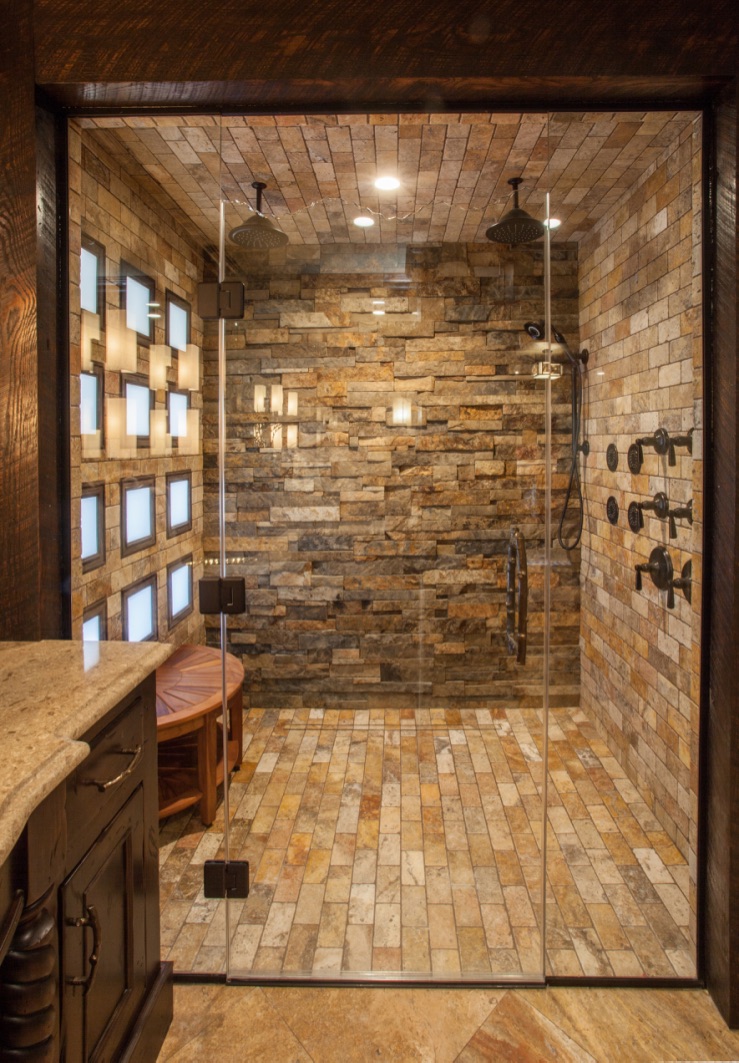If you have found yourself drawn to any of the apartments in "Only Murders in the Building", it probably says something about your personality. Check out what the design styles of Charles-Haden Savage, Oliver Putnam, or Mabel Mora says about you!
Leathered, Honed, Matte and Polished Countertops: What’s the difference?
So you’ve decided to upgrade your kitchen by putting in new countertops. Whether it’s granite or quartz or even marble, an increasingly popular option for stone countertops is to have the product fabricated where the surface has a finish other than the glossy, polished appearance that has been the norm for decades.
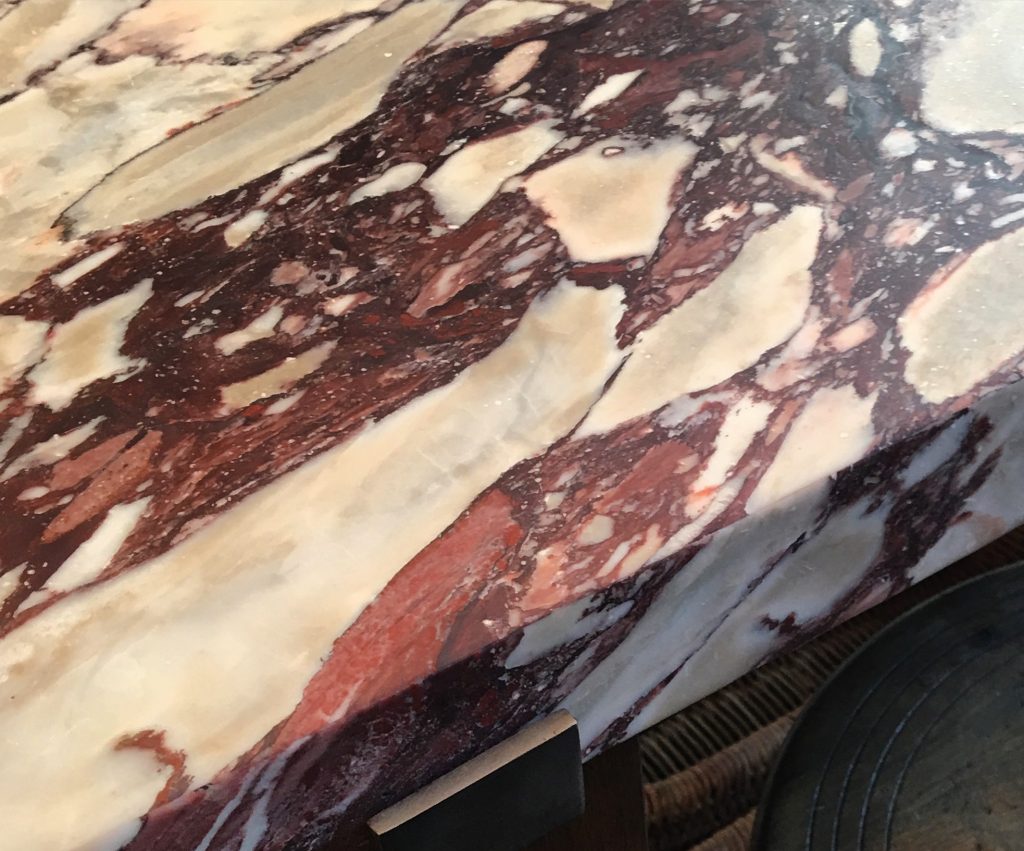
Let’s start with matte finishes. There are several different options in this category, but we’ll start with a basic matte finish. A matte finish is a granite or quartz that doesn’t have a super-glossy finish. Pretty simple.
According to Cambria®, arguably the premier quartz line that is also made in the USA, a matte finish
“…will show surface markings caused during normal use, which are easily removed with an all-purpose cleaner such as concentrated Simple Green® cleaner. Cambria Matte™ finish does not shine, and may soil and/or appear to stain from soiling, especially when used in heavy traffic areas such as flooring.”
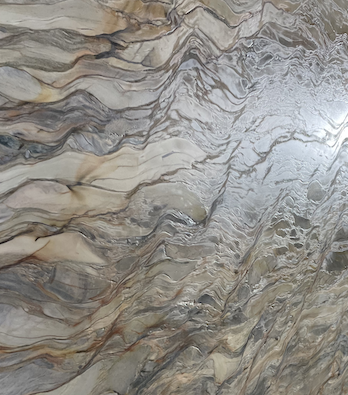
Leathered countertops are all the rage, and there’s good reason for that! This finish not only reduces the polished shine, but it also is broadly textured…bringing out the natural graining in a supple, tactile manner. This finish offer a softer, more natural, feel than polished stone and the results can be quite stunning!
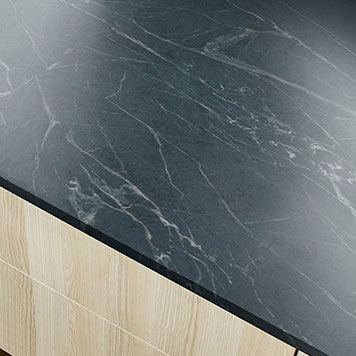
Honed countertops are similar to leathered, but the texture is smaller and more dappled.
Matte, honed and leathered countertops also evoke a relaxed and casual vibe while maintaining the strength of granite and quartz, and can be a great alternative to the highly porous options such as marble, limestone or concrete. Plus, many people prefer the matte finish when LED under-cabinet lighting is used so the reflection of the tiny bulbs is not so pronounced.
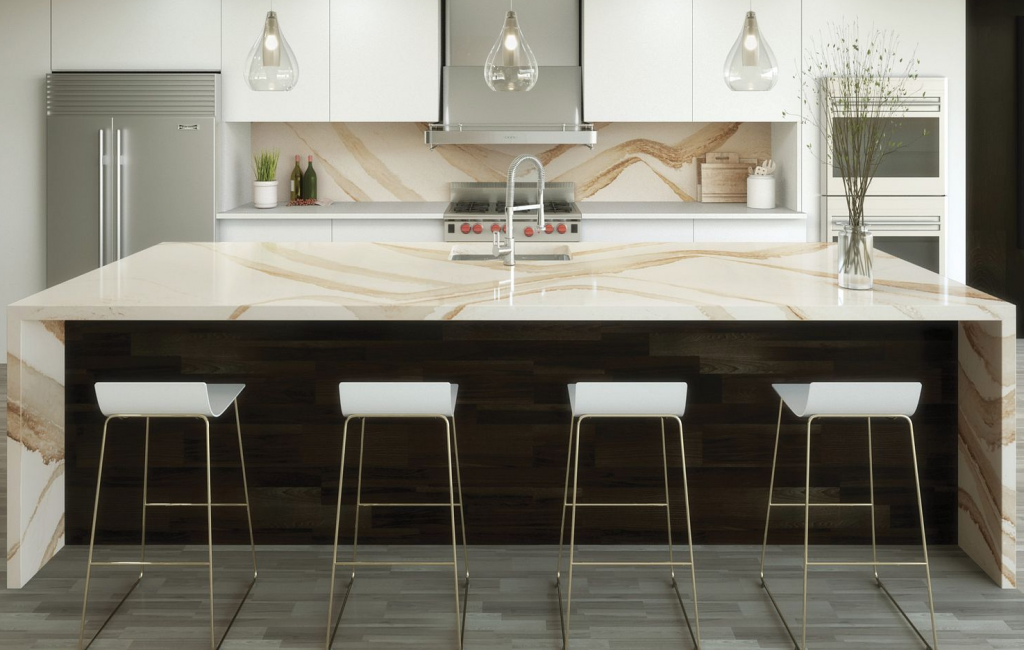
And obviously, polished means just that — the material (quartz or granite) is buffed and coated to give a shiny, almost reflective, finish. This finish was the norm for many, many years and some prefer this for marble or marble-look quartz as it is a classic look.
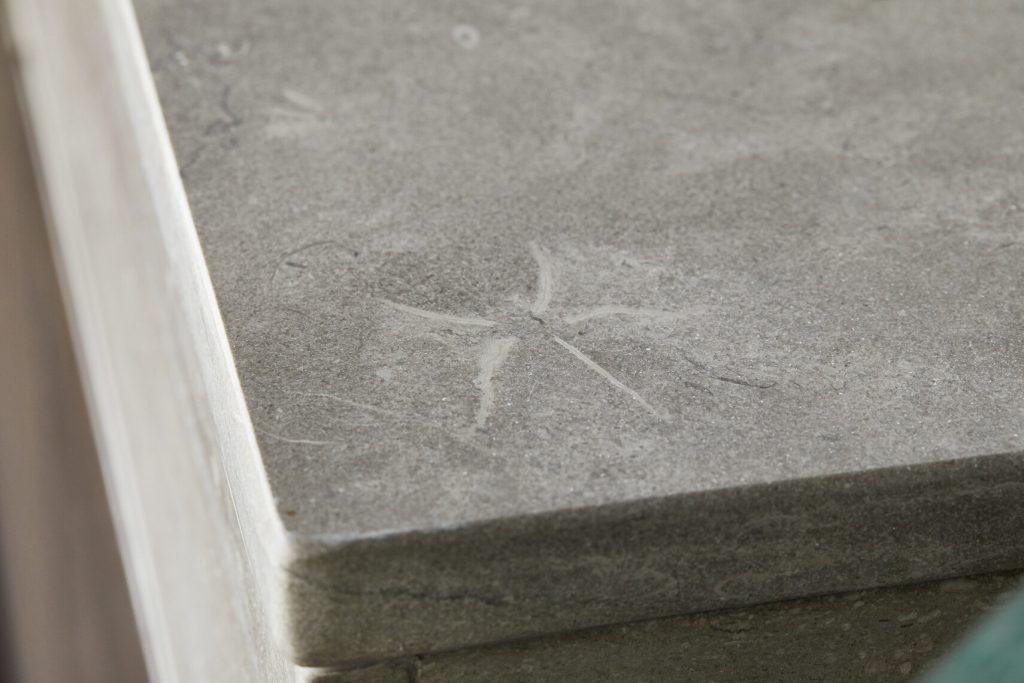
In the last several years, quartz has become more and more available in a matte finish directly from the manufacturer. In matte, quartz in particular can take on the look of slate, concrete or marble, without the inherent delicate qualities that comes from a softer stone.
CONSIDERATIONS & CARE
There are some considerations with choosing a matte finish for your stone or quartz countertops. True matte and honed finishes do require more maintenance than their polished counterparts. Water rings and food debris will be more evident on this surface than on polished.
Also, and especially when using dark quartz or granite, some may find that honed surfaces show fingerprints or smudges more than a reflective surface. All of these can be remedied with simple soap and water (please refer to the product’s manufacturer for which, if any, chemical cleaners can be used!)
Leathered finishes, however, have a tremendous advantage over the other two matte options in that the process of adding the texture actually tightens the pores of natural stone. This not only makes fingerprints and water marks less noticeable, but it also increases the resistance to bacterial growth and stains.
Matte, Honed and Leathered finishes on granite also have a higher likelihood for visible scratches. Seams and other imperfections may also be more noticeable, but by choosing a qualified fabricator and/or installer, you can minimize that risk.
These issues could be in play with quartz, but are less likely due to the characteristics of the resin-based material.
In the end, with the prevailing casualness that is influencing interior design, matte finish options are the most popular options for countertops. Just be aware of the pros and cons and your surfaces should remain beautiful for many, many years.



